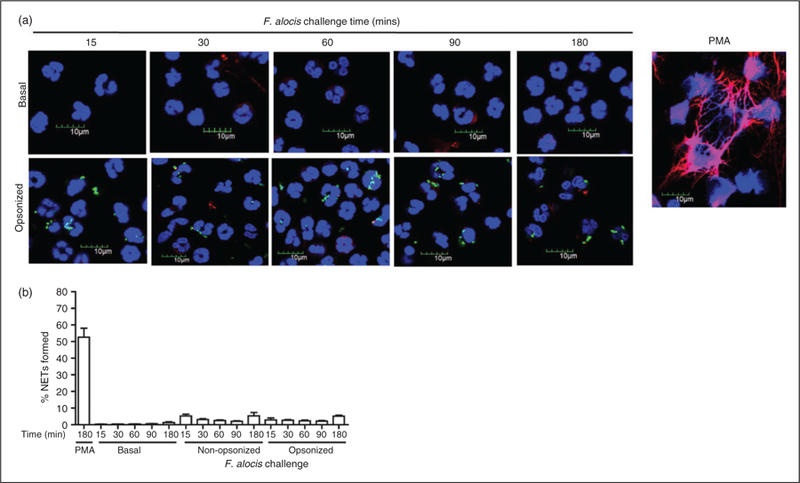Figure 1.

F. alocis challenge fails to induce NET formation by human neutrophils independent of time or serum opsonization. Neutrophils were unchallenged (Basal), exposed to PMA (50 nM, 180 min) or challenged with CFSE-labeled viable opsonized or non-opsonized F. alocis (MOI 10) for 15, 30, 60, 90, and 180 min. Following infection, cells were fixed and immunostained using Abs directed against MPO (AlexaFluor647), DNA stained with DAPI, and imaged for NET immunofluorescence by confocal microscopy. (a) Representative confocal images (from 4 independent experiments of 100 quantified cells per experiment) of basal neutrophils, neutrophils challenged with CFSE-labeled opsonized F. alocis or neutrophils exposed to PMA (180 min). CFSE-F. alocis (shown in green); Neutrophil nucleus/DNA-DAPI (shown in blue); neutrophil MPO (AlexaFluor647 shown in red), Merge image: NET formation. (b) Quantification of percentage of NETs formed using ImageJ analysis. Data are expressed as means of % NETs formed ± SEM from four independent experiments.
